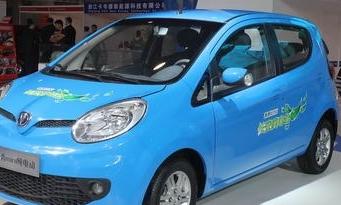Electric Vehicle Industrialization Needs Innovative Business Model
 There are several major obstacles that currently affect the industrialization of electric vehicles: First, the mileage of electric vehicles is short; second, their price is approximately twice that of traditional cars; and third, long charging time and inconvenient charging. To solve these problems and thus accelerate the industrialization of electric vehicles, we must fundamentally rely on technological breakthroughs. However, in the short term, it is particularly important to solve the problems encountered in the development of electric vehicles through the innovation of business models in the absence of technological breakthroughs. Unlike the traditional automotive business model, the available business models for electric vehicles will likely include emerging elements such as vehicle rental and battery replacement. These elements will help electric vehicles overcome industrialization problems from a commercial perspective. For example, through the establishment of a network of battery replacement stations, so that consumers can use the electric car in the city, can find a battery replacement station in a small surrounding (for example, 5 kilometers) at any time, thus greatly ease the restrictions on the driving range of electric vehicles To solve the "low performance" problem. For another example, the establishment of a network of electric vehicle leasing can solve the "high cost" problem, so that consumers do not have to bear the high cost of purchase and the "idle" funds for long-term use of cars.
There are several major obstacles that currently affect the industrialization of electric vehicles: First, the mileage of electric vehicles is short; second, their price is approximately twice that of traditional cars; and third, long charging time and inconvenient charging. To solve these problems and thus accelerate the industrialization of electric vehicles, we must fundamentally rely on technological breakthroughs. However, in the short term, it is particularly important to solve the problems encountered in the development of electric vehicles through the innovation of business models in the absence of technological breakthroughs. Unlike the traditional automotive business model, the available business models for electric vehicles will likely include emerging elements such as vehicle rental and battery replacement. These elements will help electric vehicles overcome industrialization problems from a commercial perspective. For example, through the establishment of a network of battery replacement stations, so that consumers can use the electric car in the city, can find a battery replacement station in a small surrounding (for example, 5 kilometers) at any time, thus greatly ease the restrictions on the driving range of electric vehicles To solve the "low performance" problem. For another example, the establishment of a network of electric vehicle leasing can solve the "high cost" problem, so that consumers do not have to bear the high cost of purchase and the "idle" funds for long-term use of cars. At present, the commercial operation of domestic electric vehicles has initially formed the Shenzhen Putian model applied to the field of electric buses, the Hangzhou lease and exchange model applied to the taxi field, and the Hefei targeted purchase model. The market entry points of the three models are different and each has its own characteristics. This provides a reference for us to promote the business model in the next step. It also reflects the problems and obstacles encountered during the exploration of the business model of electric vehicles, which are mainly reflected in the lack of science in local governments. The business model promotion planning; the interest distribution mechanism operating around the business model has not been formed; the business model between different regions lacks a unified coordination mechanism.
Therefore, we should formulate policies that encourage innovation in the business model of electric vehicles:
First, there should be more guidance at the national level. Relevant departments should, on the basis of summarizing the successful experience of existing business models, guide the promotion of business models in various regions, and provide guidance on regional harmonization, energy supply, product access, and charging standards.
The second is to carry out pilot innovations in the business model of electric vehicles. On the basis of existing pilot technologies, it is necessary to further promote the pilot work of the business model in order to verify the feasibility of different business models, and at the same time further discover good and new business models in practice.
The third is to implement a franchise system in specific areas. In order to prevent monopoly and market chaos, the government can implement a franchise system for participants involved in the business model of electric vehicles, and issue franchise licenses to new specialized institutions that emerged in the process of business model innovation, such as car operators and battery operators. To ensure that the market norms operate.
Fourth, the use of fiscal and tax support means to cultivate the electric car rental market.
Plastic Board Packaged Ratchet Lashing Belt
Packaged Ratchet Lashing Belt,Heavy Duty Ratchet Straps,Ratchet Lashing Belts
Winnerlifting Industry & Trading Co., Ltd. , http://www.nbratchet.com
